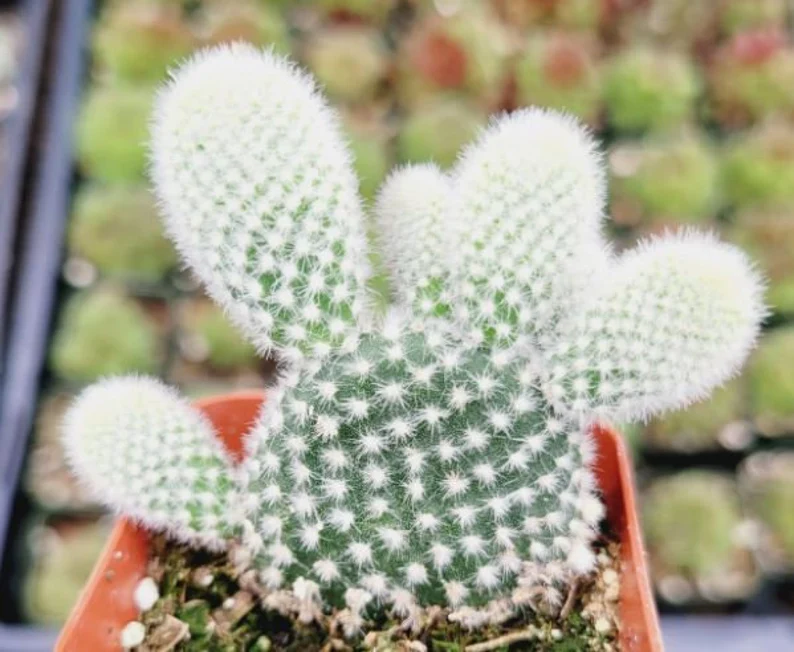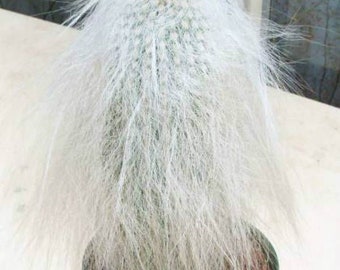
What is a White Fuzzy Bunny Ear Cactus?
A White Fuzzy Bunny Ears Cactus, also known as Opuntia microdasys, is a species of cactus that is native to Mexico. It is a small, slow-growing cactus that can reach up to 2 feet in height. It is called “bunny ears” cactus because of its small, round pads that resemble the ears of a rabbit. The “white fuzzy” part of the name refers to the white, hair-like spines that cover the pads. This cactus is popular as a houseplant due to its small size and unique appearance.
How to care for a Fuzzy Bunny Cactus:
To tend to a White Fuzzy Bunny Ear Cactus, you should follow these general guidelines:
- Light: This cactus prefers bright, indirect light. Place it near a window that gets plenty of sunlight, but make sure to protect it from direct sunlight, which can burn the pads.
- Water: Water the cactus infrequently and only when the soil is completely dry. When watering, be sure to give the soil a thorough soaking, then allow the water to drain away.
- Soil: Use well-draining cactus or succulent potting mix for your cactus.
- Temperature and Humidity: This cactus prefers warm temperatures (between 70-90°F) and low humidity.
- Fertilizer: During the growing season, you can fertilize your cactus with a cactus or succulent fertilizer.
- Pruning: The “bunny ears” of the cactus can be propagated by cutting the pads away from the main body and allowing them to dry out for a few days before planting them in a well-draining soil.
- Pests and Diseases: Keep an eye out for pests, such as mealybugs and spider mites, which can be treated with insecticidal soap. This cactus is generally resistant to disease, but if you notice any rot or discoloration, it is best to remove the affected area as soon as possible to prevent the disease from spreading.
Where to Purchase?
You can purchase this cactus at our Esty shop. Happy Shopping!


